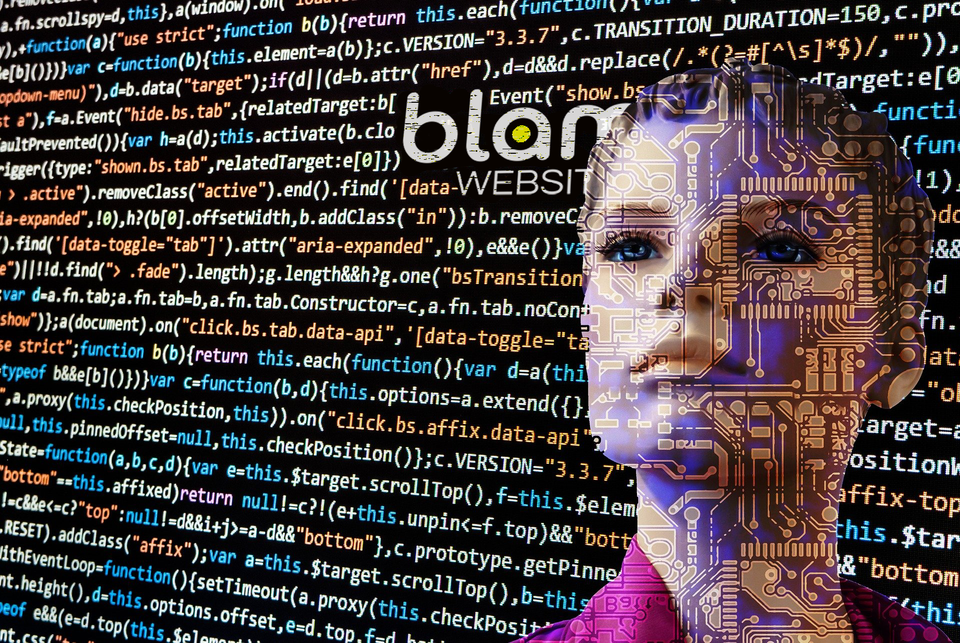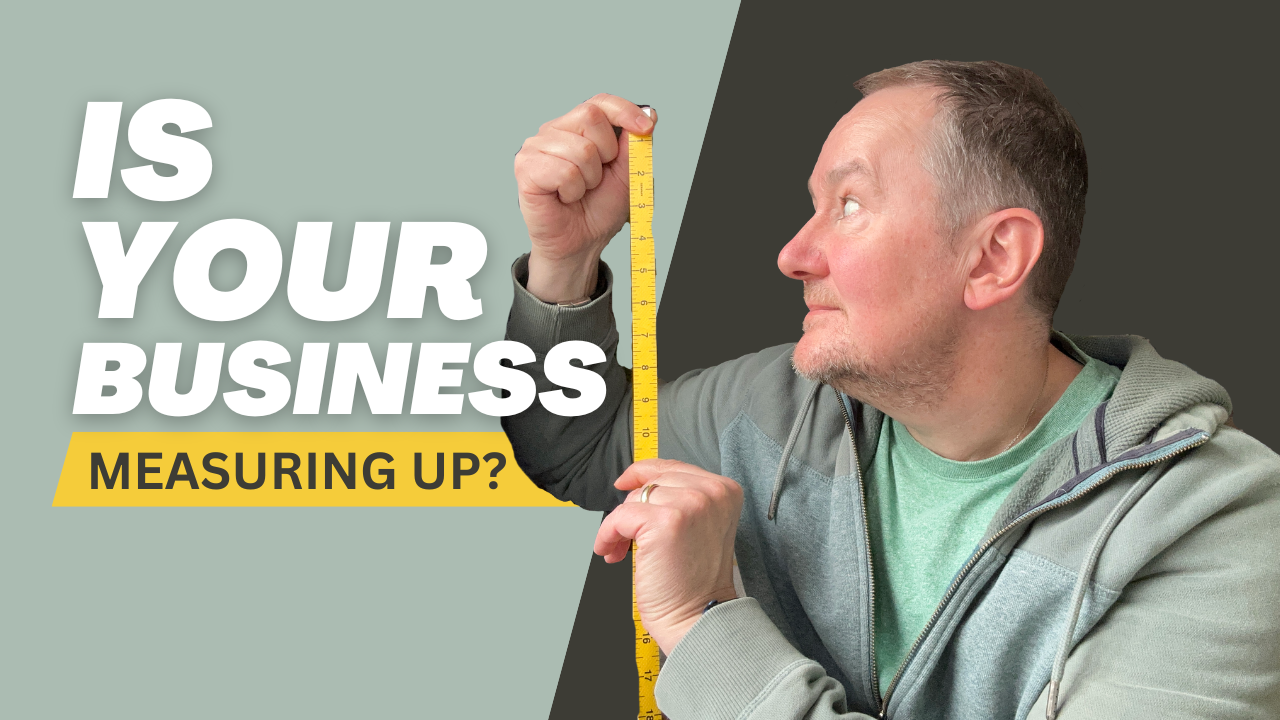What Has Changed in Business After Covid-19?
Blam Websites • June 28, 2020
A New Remote World

Last week, I wrote about how the current climate has forced all companies, no matter how small, to prioritise their digital systems and offer the consumer easy access to online goods and services through AI website and mobile app platforms. Today, I would like to take this further and suggest that we have now reached a point of no return, with the world recovering, consumer behaviours have changed forever.
No Going Back For Customers
Consumers, rapidly growing accustomed to engaging in digital technologies, appear to be happy to shop from the comfort of their own homes, and look set to continue to develop and embrace this habit further. Older generations who previously shunned shopping via a screen have had to become more familiar with their devices in tracking down supermarket slots, figuring out online banking and ordering their beloved gardening resources. This way of interfacing shows no signs of diminishing and businesses across all industries will need to revisit every aspect of their digital presence in order to ensure that they are providing a highly effective experience for the customer.
Healthy Digital Trends
Higher demand for digital interfacing is emerging not only in the product sector but also in services where digital interfacing is becoming more commonplace. Telehealth, for example, has seen an explosion in its use as people seek health-related services such as therapy, patient care, advice and interventions via electronic information and telecommunication technologies rather than face-to-face. Companies such as Peloton have seen an unprecedented surge in demand with its interactive at-home workout bikes and streaming service growing ever popular as gyms across the globe closed. Selling 400,000 bikes back in Feb 2020, Peloton has seen an exponential rise in demand for its fitness equipment and monthly subscription rates and has now doubled its sales to over 886,100.
Bring Your Own Device
World responses to the pandemic saw many employees begin working from home in March 2020. Having the freedom to utilise their own technology, with no work restrictions brought a whole new meaning to Bring Your Own Device. Even where workers had a business laptop, they were able to depend more heavily on their own personal devices to access work resources. Pre-lockdown, 87% of businesses relied on employees to use BOYD and these figures are only bound to have increased. Productivity rates already increased by 34% where employees were allowed to use their own devices so we can only wonder if this rate has grown significantly since workers have shifted to home environments with limitless access to their own hardware to stay organised and remain on task.
App, App and Away
At one time, apps were seen as something that much larger businesses invested in but now we are reaching a point where nearly every business will need to provide an app. Social distancing has forced the need to leverage the power of apps to provide contactless experiences for ordering, loyalty schemes and booking systems.
Flexible Working
Working from home had already grown 159% since 2005 but with corporations now considering if they need their large office spaces, our city centre landscapes are due for a wholesale change. Flexible working has proven to generally improve productivity, stress levels and overall wellbeing and all of this will be increased post pandemic now we've had a taste of it enforced upon us. Much like our own head office space at Blam which is being converted into a recording studio, companies are now reinventing how they use their space as remote working becomes the norm. Property in both commercial and residential will now evolve as people and companies crave more creative use of office space both in the home and at the corporate headquarters. And let's not forget, other benefits include less pollution, reduced costs and more time with family and friends.
So What Does All This Mean?
The global pandemic has accelerated us roughly five years into the future in terms of how consumers make business decisions and purchases. We were already starting to see signs that online retail and mobile apps were the future, but now it's here, all in the space of three months! There will be short term winners and losers in all of this, but when the dust settles and people and businesses readjust, I can see the upsides far outweighing any negatives. People will be happier, the world will be less polluted, businesses will be more efficient and technology will be leading the way.

One topic that often comes up in my coaching sessions with budding entrepreneurs is imposter syndrome. It’s that feeling of not being “credible” enough or worrying that we might not truly deserve the roles we’ve claimed in our businesses. Often, this isn’t something people willingly share; rather, it’s a subject that usually needs to be coaxed out of them. Imposter syndrome is essentially the fear that we don’t know enough, aren’t authoritative, or simply aren’t “good enough” to do what we say we’re doing. I see this challenge all the time within the Blam Partnership Programme. For many people, joining Blam means diving into a whole new world of digital marketing. They become certified marketers within a few weeks, learning new knowledge and skills at a rapid pace. But because they’re just starting out, they lack the hands-on experience behind that knowledge, and that’s often when the imposter syndrome kicks in. Facing Imposter Syndrome Head-On When new Blam partners step out to meet potential clients, they might feel like they’re on shaky ground. Speaking to established business owners and advising them on their digital marketing is no small feat, especially if you’re just starting your own entrepreneurial journey. But here’s the key insight I always share: the process, the training, and the systems we use at Blam give them knowledge that, while fresh to them, is immensely valuable to the businesses they’re serving. The beauty of the Blam model is that once a Partner makes a sale, they can rely on a whole team of experts to deliver what’s been promised. This support system is there to back them up, and it allows Blam Partners to lean on their new knowledge with confidence, knowing there’s a skilled team to fulfill their commitments. Imposter Syndrome Never Truly Disappears The truth is, imposter syndrome doesn’t just vanish after the initial stages of business. It can resurface at any time, often when you’re about to tackle something new. I know this from experience because I still face it, even after years of building and coaching businesses. In fact, right now, I’m about to launch a YouTube channel to reach even more budding entrepreneurs, providing case studies, interviews, and entrepreneurial advice. And, yes, despite everything, there’s still that nagging question: Why would people want to listen to me? If I’m honest, it took me years to feel comfortable in front of the camera, and even longer to recognise that being the face of a brand can help you connect with the audience you’re aiming to support. Putting yourself out there can be challenging, especially when you’re committed to providing real value. Reframing Imposter Syndrome Imposter syndrome doesn’t mean you lack knowledge or expertise. For my part, when I look back at my journey, I’ve coached hundreds of entrepreneurs, built seven-figure businesses, and, yes, had some failures. But those experiences form the foundation of my expertise, even if I sometimes feel like “little old me” isn’t the obvious choice to give advice. The takeaway is this: If you experience imposter syndrome, you’re in good company. I’d even argue that if we didn’t experience it, we might become arrogant, and that’s certainly not an endearing or effective way to connect with others. Embrace that inner doubt, but don’t let it hold you back. Instead, lean on the facts. Recognise the tools, training, and knowledge at your fingertips. In most instances, if you’re genuine and straightforward with your clients, you’ve got everything you need to deliver. Moving Forward with Confidence If you’re an entrepreneur dealing with imposter syndrome, remember that feeling unsure is part of the journey. Everyone feels it, it’s not a sign that you’re incapable, but rather that you’re pushing yourself to grow. Embrace that vulnerability, lean on the support systems you have in place, and trust in the value you bring to your clients. If you’d like to know more about the Blam Partnership Programme, check out the links below. And keep an eye out for my upcoming podcast, where I’ll dive deeper into topics like this and share more insights for those of you taking your first steps into the entrepreneurial world.

In the world of Blam, Chi Le’s story stands out as a perfect example of blending passion with purpose. As the founder of Marble Mountains Media, based in Vancouver, Canada, Chi has taken the leap from corporate life to entrepreneurship, a journey that is as inspiring as it is educational under Blam’s wing as a Partner. I had the pleasure of chatting with Chi about her agency’s growth, her decision to join the Blam Partnership Programme, and the lessons she has learned along the way. From Digital Product Manager to Entrepreneur Chi’s journey into the world of digital marketing was not a straight line to success. Before founding Marble Mountains Media in December last year, she worked as a digital product manager for Herschel Supply, managing the e-commerce presence across Canada, the US, and Europe. Chi loved her role in using technology to solve business problems, but she felt a growing urge to carve out her own path as an entrepreneur. “I enjoyed what I was doing at Herschel, and I had great relationships with my co-workers,” Chi said. “But I wanted to expand my values and impact other businesses by doing something for myself.” This realisation, along with the steady stream of clients she gained after launching her agency in February, pushed her to take the leap and go full-time on her business in May. The Challenge of Transitioning Shifting from corporate to entrepreneurial life is no small feat, and Chi admits that her transition came with challenges. “I was used to being on the side of the brand, picking out tech vendors and working with digital agencies. Suddenly, I found myself on the other side, trying to sell solutions to businesses. It was daunting at first.” Rather than seeing this as a setback, Chi leaned into her experience. Her background in IT and product management meant she had a deep understanding of the challenges business owners face when it comes to using technology effectively. This empathy has been one of her key strengths as she shifted from managing teams to being the one offering solutions. Building Marble Mountains Media: Finding a Niche One of the things that stood out in our conversation was how intentional Chi has been about finding the right niches for her agency. Marble Mountains Media focuses on two distinct sectors: interior design and construction, and medical clinics. This focus was not immediate, but rather the result of careful exploration. “At the start, I thought I would focus on real estate agents, but I quickly realised that they didn’t need the larger marketing solutions I was offering,” Chi explained. From there, she pivoted to working with interior design firms, architects, and construction project managers, industries she found intriguing because of their collaborative nature and the balance they strike between creativity and functionality. “With marketing, it’s also a mix of art and science, much like interior design,” she said, a phrase I really liked (and will definitely steal!). Her second niche, medical clinics, grew out of her previous experience working as an IT manager for Texas Health Resources. Her network in the healthcare industry proved invaluable, and she quickly began securing clients in this space. “I love working with medical businesses because they’re helping people improve their health, and it feels meaningful to be part of that,” Chi added. Joining the Blam Partnership Programme While Chi brought a wealth of technical expertise to her business, she acknowledged that sales was a new skill for her. That is where the Blam Partnership Programme played a crucial role. “Sales is a completely new muscle for me,” she said. “But the training Blam provided, everything from how to speak with potential clients to dealing with rejections, has been incredibly helpful.” Blam’s support was instrumental in helping Chi gain confidence and structure in her sales approach. The programme gave her the tools to approach clients from a problem-solving perspective, which aligns with her values. “The training helped me see that sales is not about pushing products. It is about understanding the client’s pain points and finding a solution that genuinely helps them. With that mindset, the sales part happens naturally.” Beyond sales, the Blam team’s mentorship and guidance provided Chi with a strong support system as she navigated the challenges of scaling her business. “Blam has been an absolute pleasure to work with. The team has helped me a tons with sales and as I mentioned earlier, it’s is completely a new muscle for me to practice.” Looking Ahead: Scaling for Success When asked about her vision for Marble Mountains Media, Chi did not hesitate. “I want to build an international agency,” she said confidently. While the full picture of what that looks like is still forming, Chi is clear that she wants to keep expanding her reach. “Right now, we’re based in Vancouver, and I have clients in the US and Canada, but I’m also working on a mentorship programme for businesses in Tanzania.” For Chi, scaling is not just about growth, it is about having the right team in place. “I have always had a scalability mindset,” she said. She is already thinking about hiring account managers and a sales team to help take her agency to the next level. “It is not just a lifestyle business for me. I want to grow, and I want the right processes and structures in place to make that happen.” Final Thoughts Chi’s journey from working in corporate Canada to running her own digital marketing agency is a testament to the power of taking risks, trusting your instincts, and building strong partnerships. Whether it is through her intentional focus on her niches, her empathetic approach to solving client problems, or her plans for scaling globally, Chi Le and Marble Mountains Media are on a path of steady and meaningful growth. The Blam Partnership Programme has been a key part of her journey, giving her the support and training she needed to thrive in her new role. As Chi continues to build her agency, it is clear that her values of problem-solving, empathy, and resilience will continue to guide her success. To watch the full interview click here . To your success, Grant

This past week, I’ve been in New York City with my mastermind group. Now, if you’ve never heard of a mastermind, let me break it down for you. A mastermind is where you meet up with a group of like-minded individuals. For me, that means entrepreneurs and business owners, people who are all focused on one thing: the success of their business and making a real difference in their markets. We come together, share knowledge, brainstorm ideas, and hear from experts across various industries. It’s three full days of immersing ourselves completely in our businesses. And here’s the thing, this isn’t just about trading business cards and listening to a few motivational speeches. No, it’s way more than that. It’s a space where we dissect our businesses, look at best practices, and dive deep into the challenges we all face. It’s an environment where everyone’s committed to growth, and you know what? That’s what makes the magic happen. Every week, our group also meets online for an hour to share updates. We talk about what’s working, what’s not, our wins, and even our toughest losses. It’s a space where we share our hopes and dreams, and then, as a group, we help each other push forward. The value of this consistency and support is hard to put into words. It keeps me grounded and focused on my goals, and every week I come away inspired. Twice a year, we all meet up in person at different venues across the U.S. to really dig in and, let me tell you, those three days are intense. It’s a solid block of time dedicated to nothing but our businesses—no distractions, no excuses. Because let's face it, in the day-to-day hustle, it’s easy to let things slip. Maybe there’s not enough time, not enough resources, or maybe it’s just not the right moment. But when you set aside three full days to focus, things shift. Priorities become clear, and you’re forced to confront what needs to be done. The way we structure these events is simple: the first two days are all about learning and sharing ideas. We brainstorm, challenge each other’s thinking, and soak up insights from industry leaders. Then, on the third day, it’s implementation time. It’s not enough to just talk about great ideas; you have to put them into action. That’s why having a dedicated day to take what we’ve learned and start applying it right away is so powerful. Being part of a mastermind has been one of the most inspiring, motivating, and productive experiences of my entrepreneurial journey. When you’re in a room with people who are pushing themselves to be better, it pushes you to do the same. There’s a phrase I love (if you read my emails you’ll know this, lol), “You are the average of the five people you spend the most time with.” And at these masterminds, my average gets elevated every single time. And let’s be honest, the locations don’t hurt either! Right now, I’m writing from a rooftop in Soho, Manhattan, surrounded by the energy of the city, and it’s incredible, in February I was in Venice beach, California, a different vibe but a great vibe none-the-less. When you’re in a place that’s dynamic and inspiring, it shifts your mindset. It’s like the setting amplifies the experience. We get to mix business with pleasure because when you love what you do, they blend together. Business becomes your passion, and helping people with your products and services isn’t just work, it’s what drives you. So, I’m diving back in, with another day and a half to go. I’m fired up and can’t wait to put into practice what I’ve learned so far. And you know what? We’ve only just started! If you’re not part of a mastermind group yet, and you’re someone who’s serious about growth, I highly recommend finding the right people to connect with. Even if a formal mastermind isn’t an option for you right now, start by surrounding yourself with people who challenge and inspire you. Build a network that lifts you up, not one that sows seeds of doubt. Keep the naysayers at bay because when you’re in the right room with the right people, anything is possible. The sky really is the limit. **Your environment matters. Your network matters. And your success? That’s just a reflection of the people you choose to spend time with.** To your success, Grant

I’m taking a quick breather from a long weekend that was a blend of both work and relaxation. As I reflect on this balance, one core principle comes to mind, something we live by at Blam. You’ve probably seen it on our merch, like the pens or t-shirts we’ve got around: "Work Like a Maniac." Now, let me explain why this isn’t just a catchy slogan, but a way of life if you're serious about success in business. Why Working Like a Maniac Matters If you’re an entrepreneur, or hoping to become one, you’ll often hear people say how hard they work. But when you’re truly driven, genuinely focused on achieving your goals, working like a maniac becomes your new normal. It’s not about burning out (though I’ll get to that later), but about creating habits that allow you to get more done, faster, and more effectively. For some people in traditional 9-5 jobs, the amount of effort you put into your business might seem excessive. But here’s the reality: compared to ultra-successful people, those who have reached the highest levels of productivity, even I sometimes feel like I’m barely scratching the surface. That’s because there’s always room to become more efficient, more focused, and yes, to work even harder. What Does "Working Like a Maniac" Really Mean? It’s not about staying busy for the sake of being busy. It’s about getting into a rhythm where hard work becomes second nature. And when you’re running a startup, especially in those early days, you’re going to have to push yourself harder than you ever have before. I guarantee it. When I first started my business, I worked like a maniac because I had no choice. I had limited cash flow and six months to make it work, or else I’d have to find a job. That pressure fueled me. Add to that, my wife was pregnant with our first child, so failure wasn’t an option. I was driven by desperation and determination. The Inevitable Burnout Here’s something you might not expect: when you’re working this hard, there’s a good chance you’ll reach burnout. It happened to me. My body gave in, and I learned the hard way that even when you’re super motivated, there are limits. I hit mine, and it wasn’t pretty. But here's the thing: most of the successful people I know have gone through a similar experience. Pushing yourself to the limit is part of the journey. It’s one of the hardest things you’ll ever do, but if you don’t learn how to work like a maniac, your chances of making it are slim. Building the Habit of Hard Work Over time, working like a maniac becomes easier. What once felt impossible becomes your new baseline. You’ll be able to juggle multiple businesses and tackle challenges with a focus and energy that will surprise even you. But first, you have to train yourself to operate at that level. And once you do, trust me, you’ll see the results. Running a business is tough, there’s no sugar-coating it. But when you put in the work, and you make working like a maniac your default setting, the rewards are incredible. Let’s be clear: working like a maniac doesn’t mean working yourself into the ground forever. It’s about developing the habits and mindset that will carry you through the toughest stages of your entrepreneurial journey. When you push through those barriers, the other side is worth every ounce of effort. So, to all the budding entrepreneurs out there, ask yourself: Are you ready to work like a maniac? Because if you are, the sky’s the limit. For more tips and advice on how to hustle your way to success, check out Blam TV or visit blampartners.com. Remember, if you want it bad enough, you've got to work like a maniac. To your success! 🌟 Grant

When you step into the world of entrepreneurship, especially in the early stages, there are countless new skills to master. These skills often run counter to the habits you’ve developed working for someone else. It’s no longer about doing just one specific job well, it’s about managing every aspect of the business, and trust me, that’s a huge shift. This is where measurement becomes your lifeline. Why? Because without it, you risk letting key actions slide without even realising it. As an entrepreneur, you’re constantly learning about the critical actions and traits that contribute to your business's growth. But here's the tricky part: remembering to do them consistently. It’s way too easy to get caught up in the whirlwind of tasks and forget the very things that drive your success. Does this sound strange? It happens more often than you’d think. Take my recent experience as an example. I was away for a ten-day business trip and completely missed recording my weekly video, blog and email. Now, because I track my actions closely, I didn’t just brush this off. It’s on my radar, and my action plan is clear, I’ve got to double up on my videos and writing this week to stay on track. Today, I’m recording this one (link here), but I’ll be shooting another before the week’s out to make sure my output stays consistent. See? Measurement ensures nothing falls through the cracks. I take this same approach across all aspects of my life, especially when it comes to prioritising my health. Before I went on that ten-day trip, I knew I wouldn’t be able to get in my regular workouts. Sure, I could squeeze in some walking or quick hotel-room exercises, but it wasn’t going to be the same. So, what did I do? I front-loaded my workouts. I crammed ten workouts into the days leading up to my trip, and I’m planning to keep that intensity going now that I’m back. This way, my overall workout average for the month remains consistent, even if there was a gap in the middle. It’s all about balancing things out. And here’s the thing, you can apply this same methodology to your business. Maybe your schedule involves setting appointments, making cold calls, or driving sales. If you’ve got a holiday coming up, don’t just let everything slide for a week or two. My advice? Keep your action quota steady. Do the extra work before and after the holiday, so your overall performance doesn’t dip. It’s easy to fall out of habit, and if you’re not tracking your actions, you might not even realise it until it’s too late. The bottom line is this: measurement is everything. When you first start a business, you’re the CEO, you’re the Chief Everything Officer. You’re doing it all, and that can be overwhelming. But it also means the things that matter most to your business are the easiest to overlook. Don’t let that happen. Put measurement tools in place, record everything, and make sure that even when you take a break, your numbers stay on track. Hope that helps, and remember, measure, measure, measure. It’s the key to keeping your business growing, even when life gets in the way. To your success! 🌟 Grant





